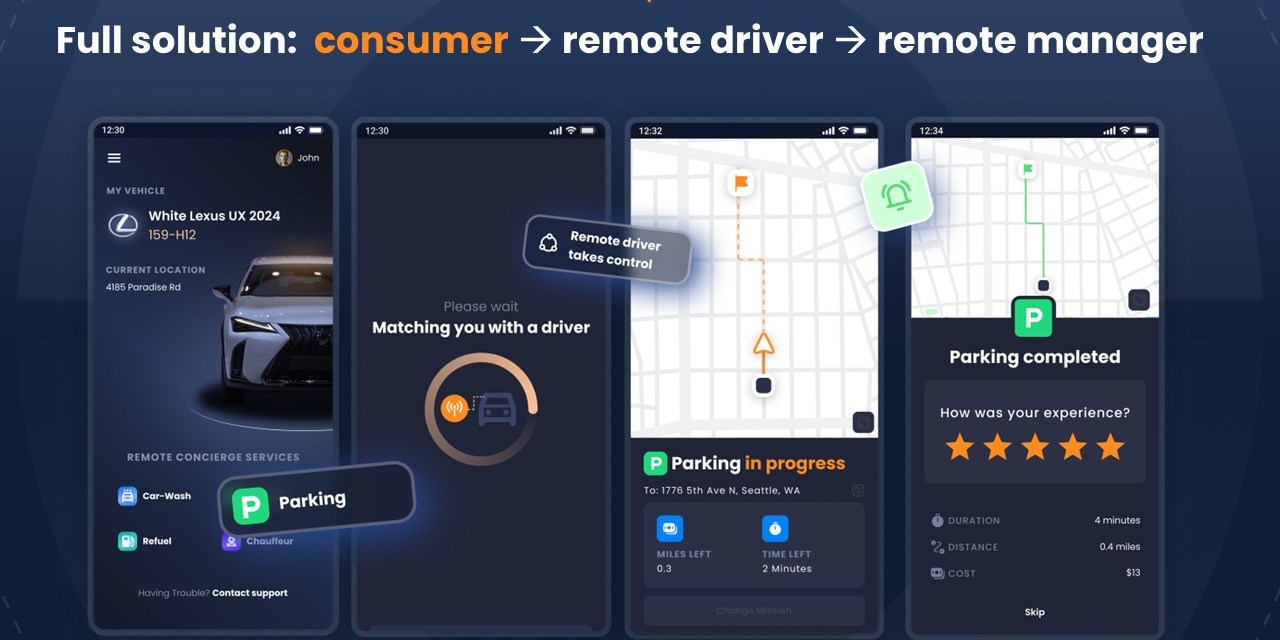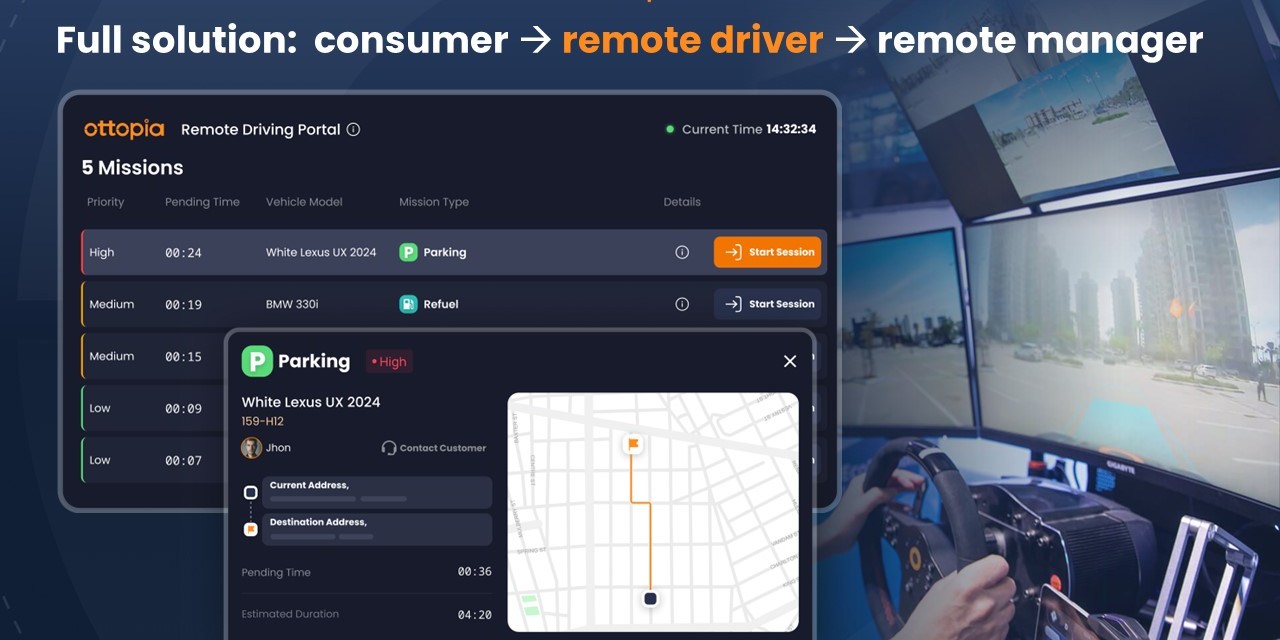Ottopia today announced a “first-of-its-kind” remote driving platform harnessing the latest in AI (artificial intelligence), network optimization, and video compression. The company is engineering its platform to equip OEMs and autonomous vehicle (AV) companies to easily adopt the technology and offer premium remote-driver services.
Previous versions of the company’s technology were “closed beta” offerings, requiring a lot of “heavy lifting” on the OEM side, and like other solutions provided limited functionality in select cities. After 6 years and close to 150 person-years of development, Ottopia is now launching a platform that meets the requirements of serial production integration. It has a new SDK (software development kit), based on several breakthroughs in AI, and went through extensive testing in over 20 cities.
In addition, the company has developed a new customer program to facilitate easier integration with vehicle platforms, enabling OEMs to launch services faster and “outcompete” rivals.
“With a press of a button, you can connect with a remote human operator, with the ability to navigate any environment safely and precisely,” said Amit Rosenzweig, Ottopia’s CEO and Founder. “Our consumer survey revealed that over 40% plan to use remote driving at least weekly and are willing to pay for the luxury, comfort, and immense benefit of the many hours our solution will save them.”
According to Ottopia, despite billions of dollars invested in driverless technology, McKinsey & Company predicted that by 2030, only 4% of new passenger cars will have Level 3 or higher automation, rising to just 17% by 2035. Level 3 automation allows vehicles to handle most driving tasks autonomously under specific conditions but still requires driver intervention. Ottopia points out that this isn’t full automation; only Level 5 is, and even by 2035, it says that experts don’t expect full autonomy to have come to fruition. Current software technologies encounter numerous challenges, particularly with edge cases like construction zones.
In response to these and other challenges, Ottopia is looking to define the $11-billion remote-driving industry by leveraging the combination of humans and AI including predictive network algorithms, dynamic cross-channel forward error correction, and Real Time Super Resolution (RTSR) to enable remote operators to chauffeur car owners, bridging this gap in adoption.
Ottopia integrates existing car components such as cameras and modems into its current system architecture. The company’s network optimization leverages AI-driven algorithms that use two standard LTE connections, enabling dynamic streaming of ultra-low-latency video feeds and visual information about the vehicle’s surroundings. The solution is chipset-agnostic, meaning it works with almost any compute platform.
A control center offers a user interface for remote-driving operations, support, and services, ensuring smooth and effective management.
Built-in safety and security measures include secure development protocols and a safety-policy engine as well as state-of-the-art encryption and authentication to maintain high standards of operation. The platform’s flexible APIs and vehicle-agnostic design allow for easy integration with third-party systems.
The service presents a major opportunity for OEMs and AV companies to boost post-sale revenue and customer retention through premium remote driver subscriptions. Unlike self-driving technology that requires significant modifications to car hardware and adds to the bill of materials, Ottopia’s solution requires negligible adaptations to the existing hardware of millions of cars, ensuring cost-effectiveness and ease of implementation for the OEM.
“Our mission is to transform the way people and goods are moving,” said Alex Kirshon, CTO of Ottopia. “Our first product is for enabling humans in a remote command and control center to act as your on-demand private driver for things like finding a parking spot, recharging and refueling, periodic check-ups and repairs, running errands, family drop-offs and pickups, and even driving you when you’re too tired or stressed to drive yourself.”
Frost & Sullivan recently awarded Ottopia with the 2024 Global Enabling Technology Leadership Award, saying its solution transcends conventional models, enabling remote operators to monitor, assist, and even drive any type of vehicle using public networks in a manner that is safe, scalable, and secure. For consumers seeking luxury, comfort, and time saving, the company’s teleoperation platform enables a new type of “on demand, personal remote driver” service that can take on driving tasks such as driving in heavy traffic, parking spot searching and management, refueling/recharging, periodic check-ups, repairs, and cleaning, all done by remote human drivers.
“Ottopia’s creative endeavors extend to high levels of safety and reliability,” said Thirumalai Narasimhan, Industry Analyst, Mobility, Frost & Sullivan. “Its ATAS system ensures that remote vehicle operations remain immune to human failings, safeguarding the vehicle owner, passengers, and surroundings. With dynamic trajectory computations and bespoke automated braking algorithms, Ottopia’s ATAS sets new standards for safety and efficacy in teleoperation software.”
Founded in 2018, the Tel Aviv, Israel-headquartered company holds nine patents and has twenty more pending, and its software is currently used in vehicles including cars, buses, yard and long-haul trucks, construction machines, and delivery vehicles. Among its customers and partners are Hyundai, Magna, Deutsche Telekom, EasyMile, MooVita, Serve Robotics, and Nvidia.
- Ottopia’s remote-driving control center in action.
- Ottopia UX for the consumer.
- Ottopia UX for the remote driver.
- Ottopia UX for the remote manager.































































































